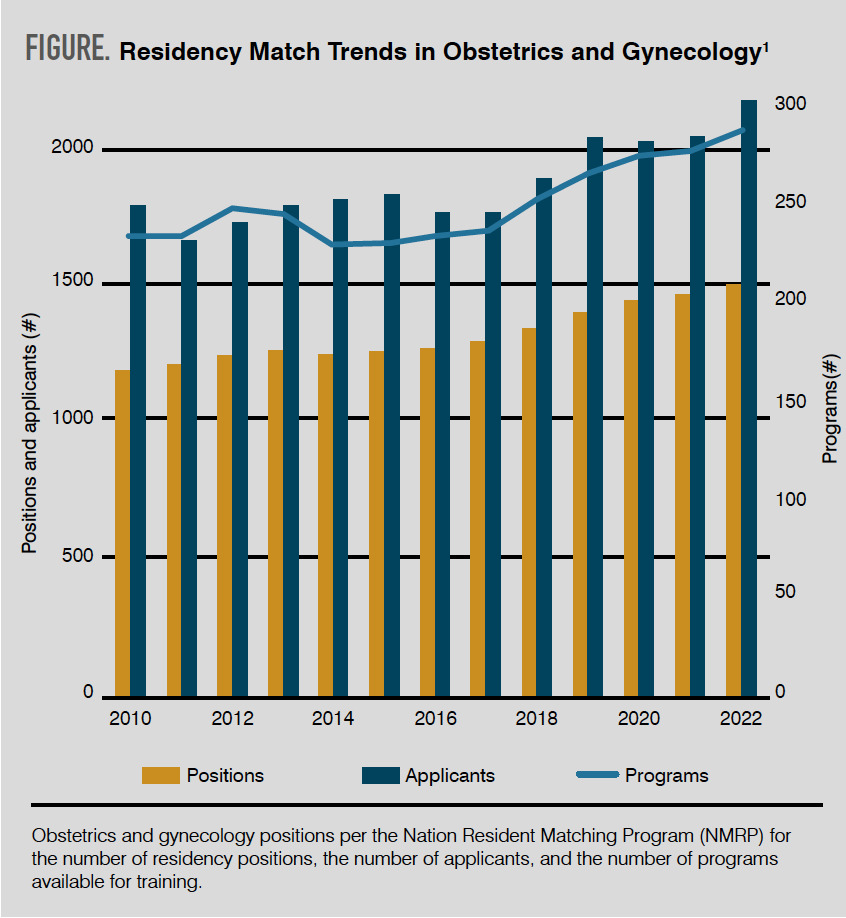A rising interest: Why obstetrics and gynecology is seeing an increase in applicants
Why obstetrics and gynecology is seeing an increase in applicants

Falls brings us back to school, for many a comforting tradition of order, back-to-school supplies (unbelievably relaxing to many) and new beginnings. For senior medical students and residents, it is a time of opportunity, new potential, and fresh beginnings. As we look at the field of resident positions in obstetrics and gynecology, it is clear that not only have there been new positions growing for the field, but there has also been growing interest from the medical profession (Figure).1
As I listen to the medical students interested in obstetrics and gynecology, preparing their chair letters, not only do they provide the typical reasons—a mixture of medicine and surgery, the ability to follow a patient over their life course, able to capture all of medicine in one field, present for life events vital for a critical event for a patient, and able to care for a patient in a vulnerable time—they have also highlighted the importance to support women and families, to provide needed care, and to participate in critical life events. The current generation of enthusiastic students entering our field have a lens to equity that we did not yet own at a similar time in our lives.
These observations give me hope for our specialty. I have seen interest in obstetrics and gynecology increase despite the COVID-19 pandemic and political situations. Many students voice an interest in not only in the intersection of surgery and medicine and continuums of care, but also the importance of supporting women and families. Their passion and excitement are infectious.
I think back to my decisions—I was torn between surgery and obstetrics and gynecology. This, on the background of my parents telling me to go into any field except obstetrics and gynecology due to the litigation and malpractice issues, but that was a long time ago. As I recognized, as do many students, the opportunities in obstetrics and gynecology are huge, as are the ability to practice both medicine and surgery. Furthermore, there is the opportunity for pure joy, which I reckon is limited in other fields. We tend to remember who delivered our baby—not so much who controlled blood glucose or a fixed a broken bone. We have the opportunity to be present at a time that is vital and critical in life.
As the leaves begin to change, and our students consider their choices, I encourage you to reflect on your reasons to pursue obstetrics and gynecology, and on the field’s importance— not just for you, but for your patients and for their families—and reconnect with your passions.
Catherine Spong,editor in chief, is professor and vice chair in the Department of Obstetrics and Gynecology and Chief of the Division of Maternal-Fetal Medicine at UT Southwestern Medical Center in Dallas. She holds the Gillette Professorship of Obstetrics and Gynecology.
Reference
1. Results and Data 2022 Main Residency Match. The National Residency Match Program. May 2022. Accessed September 7, 2022. https://www.nrmp.org/wp-content/uploads/2022/05/2022-Main-Match-Results-and-Data_Final.pdf
S4E1: New RNA platform can predict pregnancy complications
February 11th 2022In this episode of Pap Talk, Contemporary OB/GYN® sat down with Maneesh Jain, CEO of Mirvie, and Michal Elovitz, MD, chief medical advisor at Mirvie, a new RNA platform that is able to predict pregnancy complications by revealing the biology of each pregnancy. They discussed recently published data regarding the platform's ability to predict preeclampsia and preterm birth.
Listen

